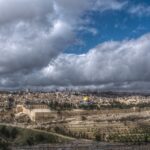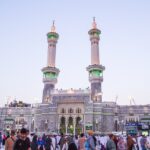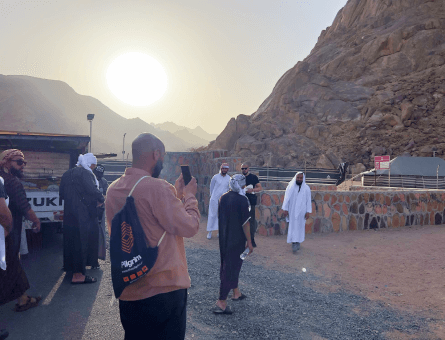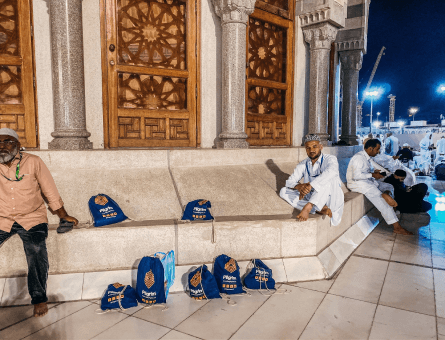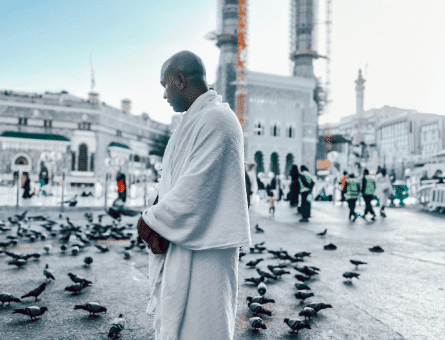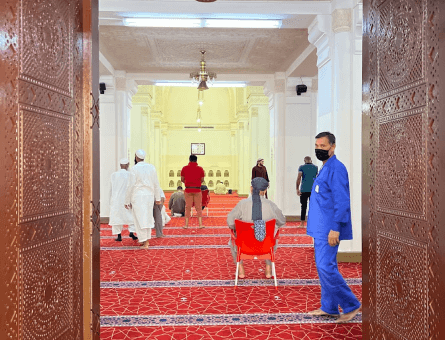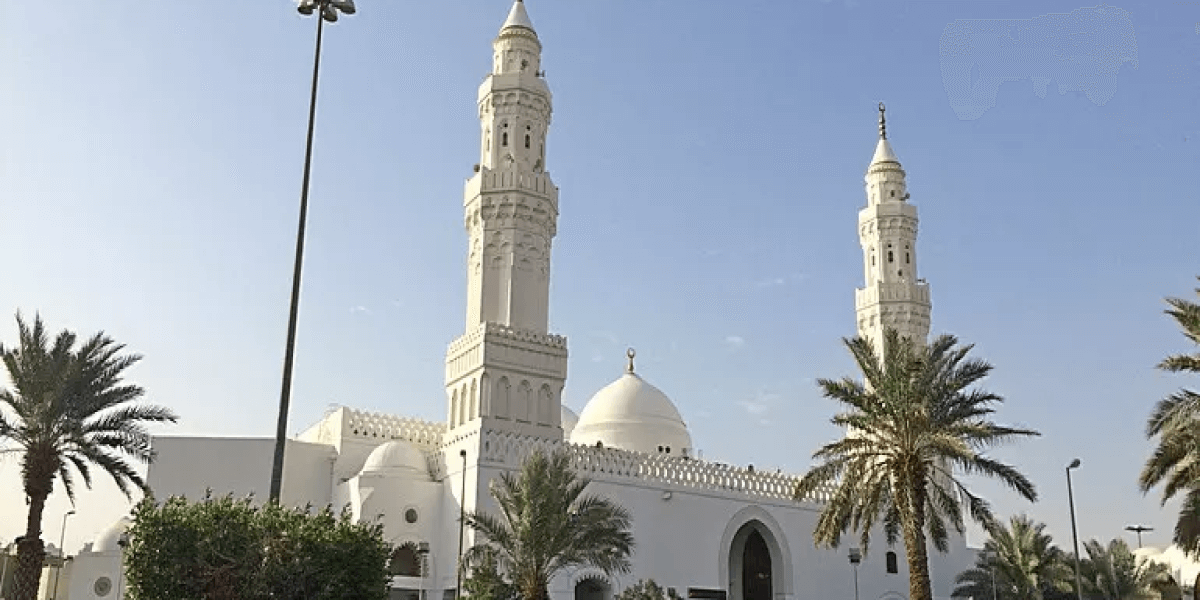Masjid al-Qiblatain – When Muslims Stopped Praying towards Jerusalem and Started Praying Towards Makkah
What Is Masjid al-Qiblatain?
Medina, located in Saudi Arabia, is known for its significant historical and religious value to Muslims across the globe. The beautiful sites and landmarks of the city remind people of the teaching of the Prophets (PBUT) and the spread of Islam. Among some of the popular landmark sites in Madinah is “the Mosque of Two Qiblas,” better known as Masjid al-Qiblatain.
Constructed by Sawad bin Ghanam bin Kaab in the second year of Hijra, Masjid al-Qiblatain is said to be the place where Prophet Muhammad (PBUH) received the Quranic revelation to change the direction of prayer (Qibla) from Bait Al-Maqdis in Jerusalem to the Holy Ka’bah in Makkah. Masjid al-Qiblatain is significant to Muslims as it is where the first congregational salah facing the Ka’bah was prayed.
Why is it Called Masjid al-Qiblatain?
Along with Masjid e Quba, Masjid al-Qiblatain is one of the earliest mosques in Islamic history. Located in the Holy city of Madinah, the sacred mosque is a unique landmark because of its distinctive infrastructure and history. Back in the day, Masjid al-Qiblatain was the only mosque consisting of two Mihrabs (prayer niches) – one facing the direction of Ka’bah in Makkah whereas the other opened up towards Bait Al-Maqdis of Jerusalem. It can be described as a semi-circular opening or niche in the wall of a mosque that indicates the direction of the Qiblah.
Therefore, the osque was given the name Masjid al-Qiblatain – the Mosque with Two Qiblas. However, since the revelation, the Mihrab facing Jerusalem has been removed whereas, the Mihrab facing the direction of Ka’bah is still open.
“Allah (ﷻ) revealed in the Quran in Surah al-Baqarah: “And even if thou broughtest unto those who have received the Scriptures all kinds of portents, they would not follow thy Qibla, nor canst thou be a follower of their Qibla; nor are some of them followers of the Qibla of others. And if thou shouldst follow their desires after the knowledge which has come unto thee, then surely wert thou of the evil doers.” [2:145]”
History of Masjid al-Qiblatain
As stated earlier, it is believed that in the Islamic month of Rajab 2 AH, a Quranic revelation came to Prophet Muhammad (PBUH) in Masjid al-Qiblatain, which instructed to change the direction of the Qiblah from Bait Al-Maqdis (Masjid Al-Aqsa) to the Holy Ka’bah.
During the initial years of Islam, Prophet Muhammad (PBUH) and all the Muslims used to pray facing Bait Al-Maqdis with the Ka’bah in front of them. Even after he (SAW) migrated to Madinah, Prophet Muhammad (PBUH) prayed in the direction of Jerusalem for sixteen months. Even during this time, Prophet Muhammad (PBUH) secretly believed and hoped for the direction of prayer to be changed to Ka’bah. And then one day during the congregational prayer of Dhuhr (or as mentioned in some references, Asar), the following Quranic verse of Surah Al-Baqarah was revealed to Prophet Muhammad (PBUH):
“Verily, We have seen the turning of your (Muhammed’s) face towards the Heaven. Surely, We shall turn you to a Qiblah (prayer direction) that shall please you, so turn your face in the direction of Al-Masjid Al-Haram (at Makkah). And wherever you people are, turn your faces (in prayer) in that direction.” [2:144]
Following the command of the Almighty, Prophet Muhammad (PBUH) changed direction and faced the Ka’bah in the middle of the prayer, and so did the obedient companions (Ummah). With the revelation of the aforementioned prayer, Prophet Muhammad (PBUH) along with the companions also offered two Rakats while facing the new Qibla/Thus. From that day onwards, the Holy Ka’bah became the new Qiblah for Muslims till the end of time.
Why Is it Important in Islam?
Masjid al-Qiblatain is one of the three oldest mosques in Islamic history. Before the recent renovation, the mosque consisted of two niches or Qiblas. Since the migration, countless congregational prayers have been led here by Prophet Muhammad (PBUH), which makes it a memorable landmark for Muslims.
Moreover, Masjid al-Qiblatain is the location where one of the most life-changing revelations took place. Muslims especially travel to pray in the sacred mosque as they believe that it will bring them closer to Allah Almighty. Therefore, throughout the year, Masjid al-Qiblatain is filled with Muslim visitors from all over, especially in the month of Zil Hajj and Ramadan.
What City Is Masjid al-Qiblatain Located In?
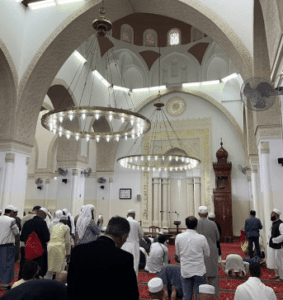 Masjid al-Qiblatain is located at a distance of three miles from Masjid-e-Nabwi in the city of Madinah. Since then, several renovations have been made to fortify and preserve the unique infrastructure of Masjid al-Qiblatain. Such as the total land if the Mosque has been expanded around 4000 square meters. Due to its religious significance, the sacred Mosque is visited by Muslims throughout the year.
Masjid al-Qiblatain is located at a distance of three miles from Masjid-e-Nabwi in the city of Madinah. Since then, several renovations have been made to fortify and preserve the unique infrastructure of Masjid al-Qiblatain. Such as the total land if the Mosque has been expanded around 4000 square meters. Due to its religious significance, the sacred Mosque is visited by Muslims throughout the year.
Masjid Al-Aqsa
Bait al-Maqdis, also known as Masjid Al-Aqsa, has a very special place in the hearts of the Muslim Ummah. From Prophet Adam (AS) to Prophet Muhammad (PBUH), Masjid Al-Aqsa is the first-ever Qibla in Islam. It has been a significant place of worship for the Prophets of Islam throughout history. The wide infrastructure of the mosque covers 144,000 square meters in size and can accommodate 500,000 worshippers at a time.
The silver-domed mosque lies in the ancient city of Jerusalem. For Muslims, the Dome of the Rock and Masjid Al-Aqsa is the place from where Prophet Muhammad (PBUH) ascended to Heaven, commonly known as the event of Miraj (Al-Isra). It is believed that Prophet Muhammad (PBUH) tethered the magnificent Burraq towards the Western Walls to pray in Masjid Al-Aqsa. This was where the Prophet (PBUH) also met the Angel Jibril.
Before the verse to change the direction of congregational prayer was revealed in Masjid al-Qiblatain, it was Masjid Al-Aqsa that the Muslims faced while offering Salah (prayer). This is why to date, Masjid Al-Aqsa beholds significant religious value for Muslims globally.
Who Built Masjid Al-Aqsa?
According to Islamic history, Masjid Al-Aqsa was built forty years after the construction of Masjid Al-Haram in Makkah. However, some scholars believe that the historical mosque was built by Prophet Adam (AS) and later by Prophet Ibrahim (AS) as well. It’s also believed that the mosque stayed hidden until Prophet Muhammad (PBUH) revived it in 637 AD.
Summary – Masjid al-Qiblatain
Apart from its divine infrastructure and Islamic significance, Masjid al-Qiblatain is where the Prophet Muhammad (PBUH) received the command to change the direction of Qibla for Muslims. Therefore, even today, when people travel to Makkah for Hajj or Umrah, they especially visit Masjid al-Qiblatain to offer two Rakats voluntary prayers in the name of Allah and His Prophet Muhammad (PBUH).
Explore The New Pilgrim App
The Ultimate App
for Hajj and Umrah!






